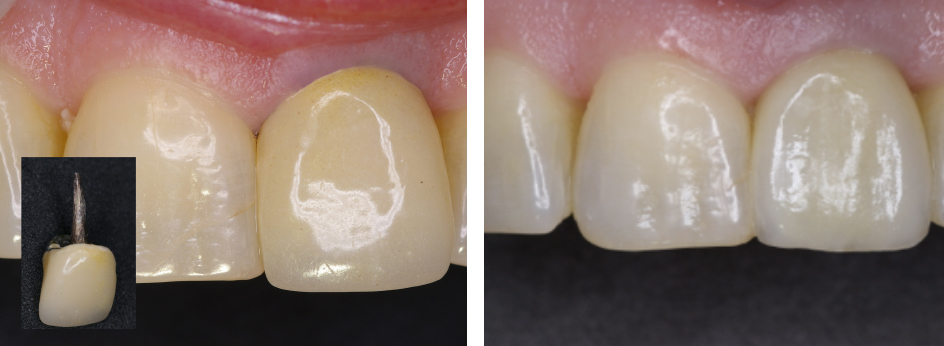"Relined" Macro-Lock Anatomic Post & Core

When the opening of the post space is 25% - 50% wider than the selected fiber post (which has a good apical fit), there are additional low-modulus techniques available. Direct-indirect chair-side techniques, using composite resin over the post, allow good adaptation. A light-cured composite can fill the flared space. Once the post is removed, the “supplemental” composite can be additionally cured, to enhance several of its properties.
This patient presented with a failed cast post and core which was exhibiting dark-root syndrome.
After removing the corrosion by-product and additional debris, the depth of the post space is established using the Universal Starter Drill to remove any remaining gutta percha. The post space is then customized, removing undercuts, using the sequence of finishing drills provided in the system.
The "Anatomic Post" or "Relined" post technique has appeared in the scientific literature for over 10 years, and has been shown to:
- Reduce cement thickness
- Improve internal adaptation
- Increase fatigue and fracture resistance
- Improve failure modes
It is aesthetic, reversible, radiopaque and can be performed in one visit, which is economical and efficient compared to the cast post technique; is the historic/traditional approach for this type of canal.
The high-density composite is stronger in thickness, compared to cement by itself, due to additional filler.
Products used in this case
- RTD Macro-Lock Post, Illusion X-RO
- VOCO Dentin Conditioner
- VOCO Meron Plus RMGI Cement
- RTD Lumiglass composite
- VOCO etching gel
- RTD Sealbond Ultima Adhesive (5th Generation)
Affiliations
- Dr. Prof. Bertoldi Hepburn teaches at Universidad de Desorolla, Concepcion, Chile, and University of Buenos Aires, Argentina